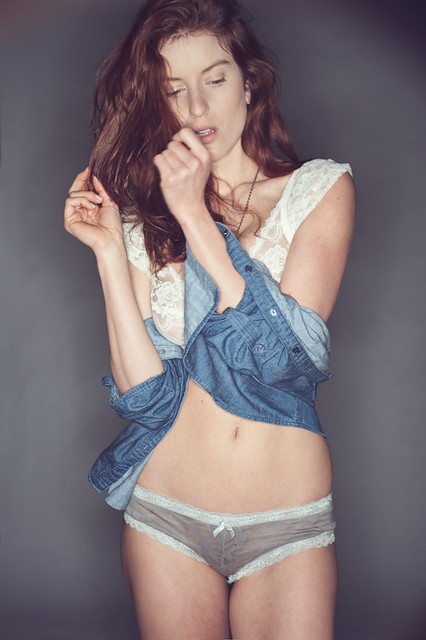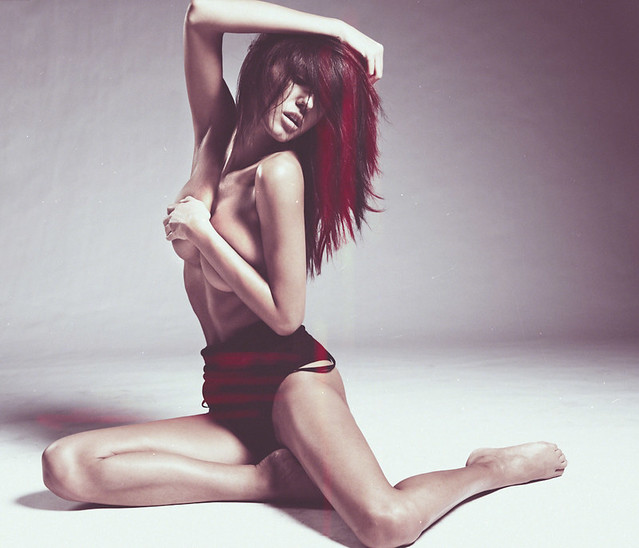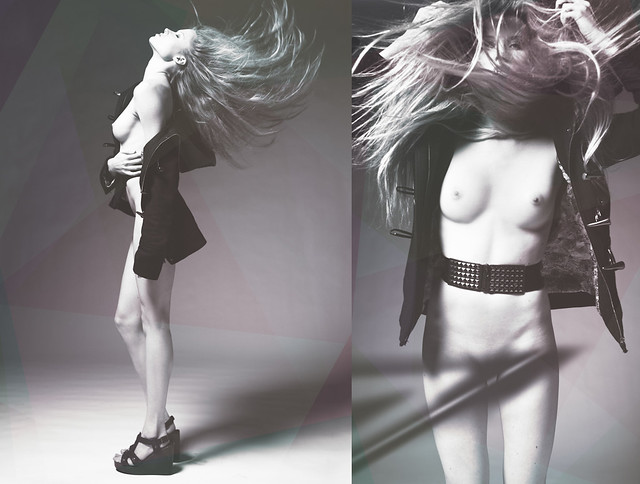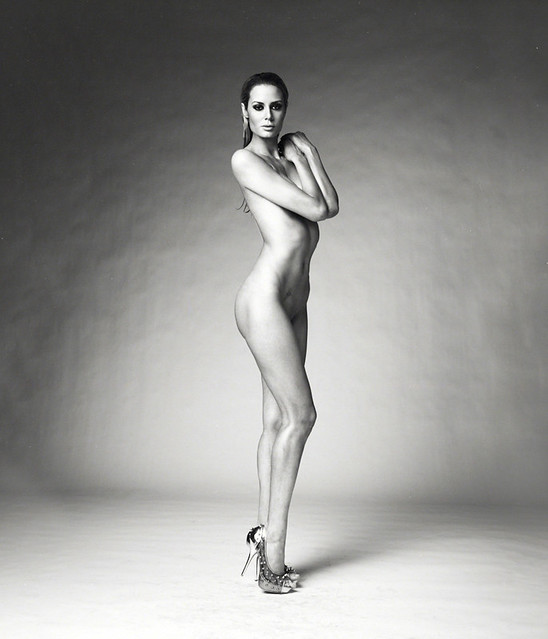
Perfect Imperfection. Holly. Nikon D3/50mm f/1.8D. 1/200th, f/4.0, ISO200.
I'm going to deviate from the script and write about Magic from the perspective of the mindset behind the following image. Yeah that's a mouthful.
There are a lot of things technically wrong about this image. I'm going to reveal every significant detail I can find.
- Composition is off. Too much foreground (or just ground) and not enough headroom for balance. Also it's skewed left.
- The background is completely exposed. Yes it's seamless paper. But usually you're not supposed to reveal the background stands.
- There's a light artifact on the upper right hand corner. No I didn't Photoshop that in. It's an artifact from using my cheap 50mm f/1.8D Nikkor within an ABR800. What you're seeing is some light leakage from the ABR into the lens from inside the ring. I can't explain it any more since I'm not really sure how or why it exists. It's a hundred-dollar lens made in the 90's, what do you expect?
- There's significant vignetting. A perfect lens doesn't vignette. A technically perfect image corrects for vignetting.
- Overexposure in the center. A byproduct of the ABR800. It's a ringflash. I shoot from about the waist-level. So the mid-section is going to come in hotter than the rest of the image because it's closer to the light.
- Motion blur in the hair. No that's not Photoshop either. It's motion blur caused by a slow flash duration (strobe set to lowest power)
- Grain, dust, speckling, scratches? Check, check, check, and check.
- Discoloration in the image. Yup, traditional cross-processed look reminiscent of the faded old-school film.
Other than that, it's a technically perfect picture :)







